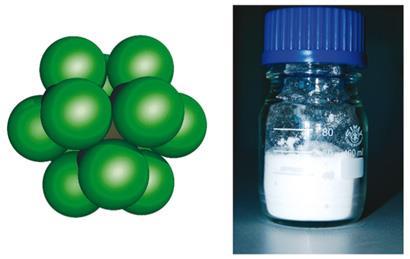German chemists have made gram quantities of an extremely useful anion via a rather scary route
For a certain breed of inorganic chemist, weakly coordinating anions are great - they hardly interact with their positive counterparts and so can stabilise unstable cations. But one of the most promising has, until now, been difficult to make. Now, German chemists have succeeded in making a lot more of the anion in one go, but by a rather nasty route.
’It started 15 years ago,’ explains Helge Willner, of Bergische University Wuppertal. Willner was working on carbonyl cations that needed weakly interacting anions to stabilise them and one day, during a coffee break it came to him. ’We had the idea to make an anion with a Teflon surface that would be the ideal weakly coordinating anion.’

But making the symmetrical [B(CF3)4]- anion turned out to be difficult. In fact, in the literature Willner and his colleague Eduard Bernhardt found many attempts that only managed to make millimolar amounts. Not really enough for a full investigation of the anion’s properties. So, Bernhardt and colleagues set to work trying to solve the problem.
’Ligand substitution doesn’t work because boron is too strong a Lewis acid,’ says Bernhardt. Instead, Bernhardt and Willner decided to start from a compound where carbon atoms were already attached to the boron - K[B(CN)4]. That hadn’t been made before either so Bernhardt made the tetra cyanoborate - which is now often used in ionic liquids - and then set about trying to halogenate it. By reacting the anion with the incredibly toxic interhalogens ClF or ClF3, Bernhardt managed to halogenate each of the cyano groups. That resulted in being able to scale up the process to make tens of grams of K[B(CF3)4].
Nick Norman from the University of Bristol, UK, explains that there’s been a lot of theoretical interest in [B(CF3)4]- because it has all the properties that make for good, weakly coordinating anions but that ’the challenge has been to make it in large quantities, which they’ve now pretty much got round with this new research’. ’There aren’t very many groups in the world that could do this sort of chemistry but they have the expertise to do it,’ says Norman.
Willner says that now he has enough of the anion to experiment with, he plans to see if it will live up to its promise.
Laura Howes
Interesting? Spread the word using the ’tools’ menu on the left.
References
Eduard Bernhardt, Maik Finze and Helge Willner, Inorg. Chem., 2011, DOI: 10.1021/ic201319h






No comments yet